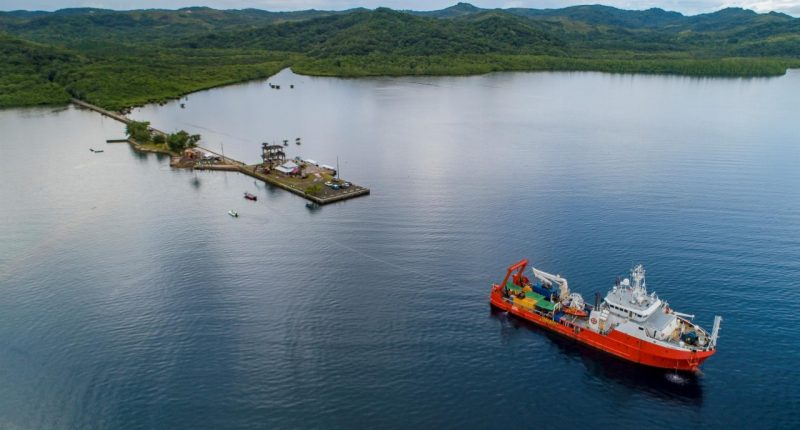Senior representatives from six countries met face-to-face for the first time in Canberra on Wednesday to push forward the delivery of the East Micronesia Cable project.
Representatives from Australia, the Federated States of Micronesia (FSM), Japan, Kiribati, Nauru and the United States met as part of the biannual Project Executive Board meeting.
The East Micronesia Cable project aims to give more than 100,000 people across the Pacific faster, more reliable, more secure and higher-quality internet.
It involves building a submarine cable connecting the state of Kosrae in the FSM, Tarawa in Kiribati, and Nauru to the existing HANTRU-1 cable in Pohnpei, FSM.
During the meeting on Wednesday, the representatives reaffirmed their commitment to delivering the “transformational” project and spoke about the steps required to complete the cable construction.
The Australian Infrastructure Financing Facility for the Pacific (AIFFP) said the collaborative efforts by the involved nations highlighted the commitment towards maximising the region’s stability, security and prosperity to support long-term social and economic growth.
Supporting long-term growth in the Pacific
The new cable aims to support the increased availability of digital government services and improve trade and employment opportunities through better access to services, information and worldwide markets.
The AIFFP said it would support economic growth and improve living standards as the region continued in its recovery from the COVID pandemic.
While internet access in FSM, Kiribati and Nauru is available via satellite connectivity, the capacity, speed, cost and reliability fall well below the countries’ needs and thus limit opportunities for their residents.
The East Micronesia Cable project vies to bring the Micronesian region closer together, as well as closer to the rest of the world.
While it might be obvious that when compared to the United States, the FSM is massively lagging behind in terms of its development of telecommunications, the figures are damning.
According to WorldData, only around 35 per cent of all residents in FSM have access to the internet.
Kiribati is one of the most isolated countries in the world, but just 38 per cent of its residents have access to the internet.
In Naruru, around 57 per cent of all residents have access to the internet.
As for the United States, 92 per cent of the total population uses the internet as of 2022, according to DataReportal.
Australia, the United States and Japan aren’t trying to bring internet usage in the Pacific nations to their levels, but are instead aiming to support long-term social and economic growth in some of the most isolated countries in the world.
Visit to the Cable Landing Station in Sydney
The representatives of the six nations will conclude their visit to Australia with a tour of a Cable Landing Station in Sydney.
Cable Landing Stations (CLS) are pivotal to communications infrastructure around the world. The demand for communication and entertainment is underpinned by more than a million kilometres of undersea cable that connects every continent across the globe.
Representatives from the six nations will look at the operational infrastructure and technology that they hope to be implemented in the countries as part of the project to bolster connectivity for the Pacific nations with the rest of the globe.








